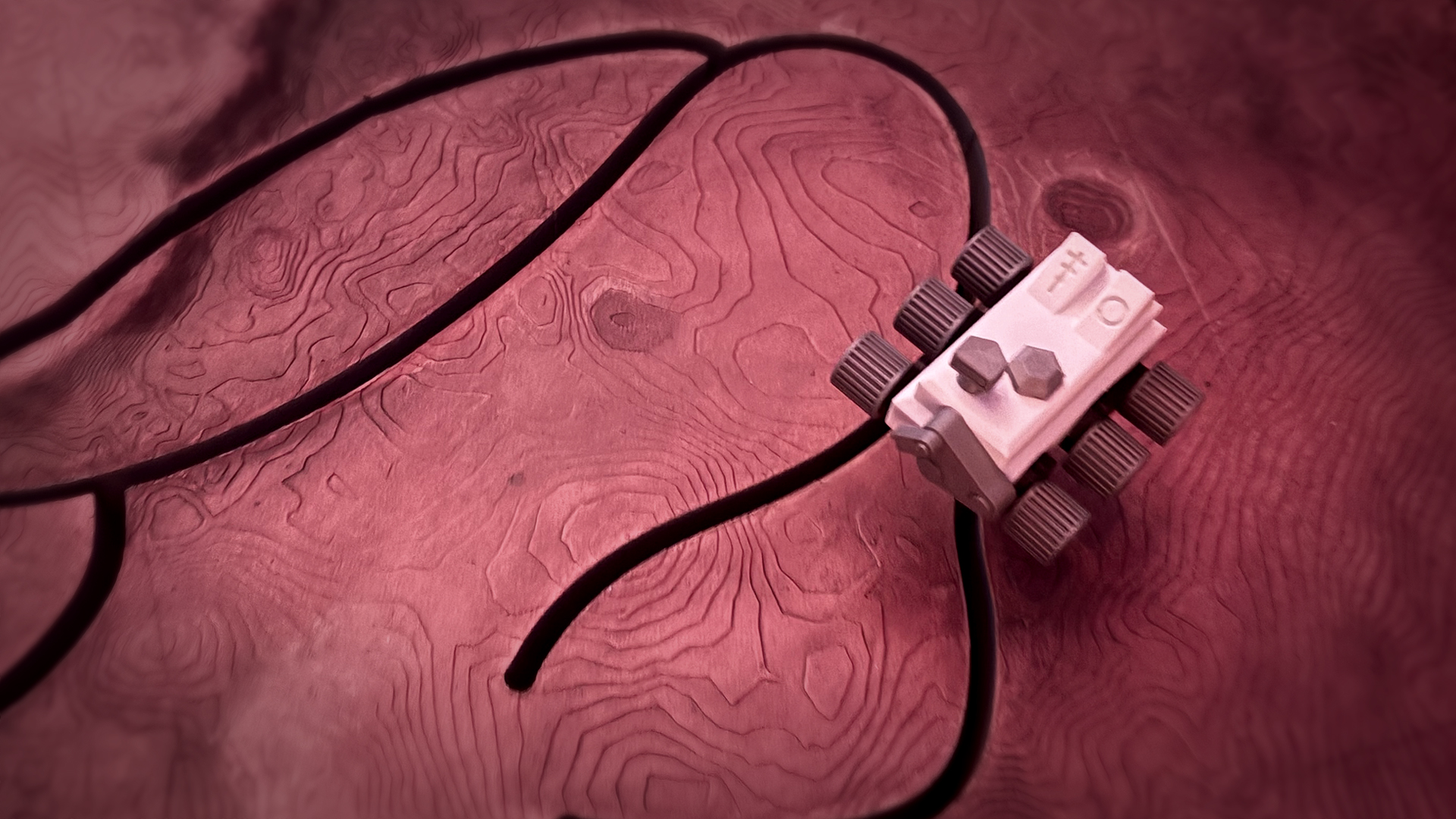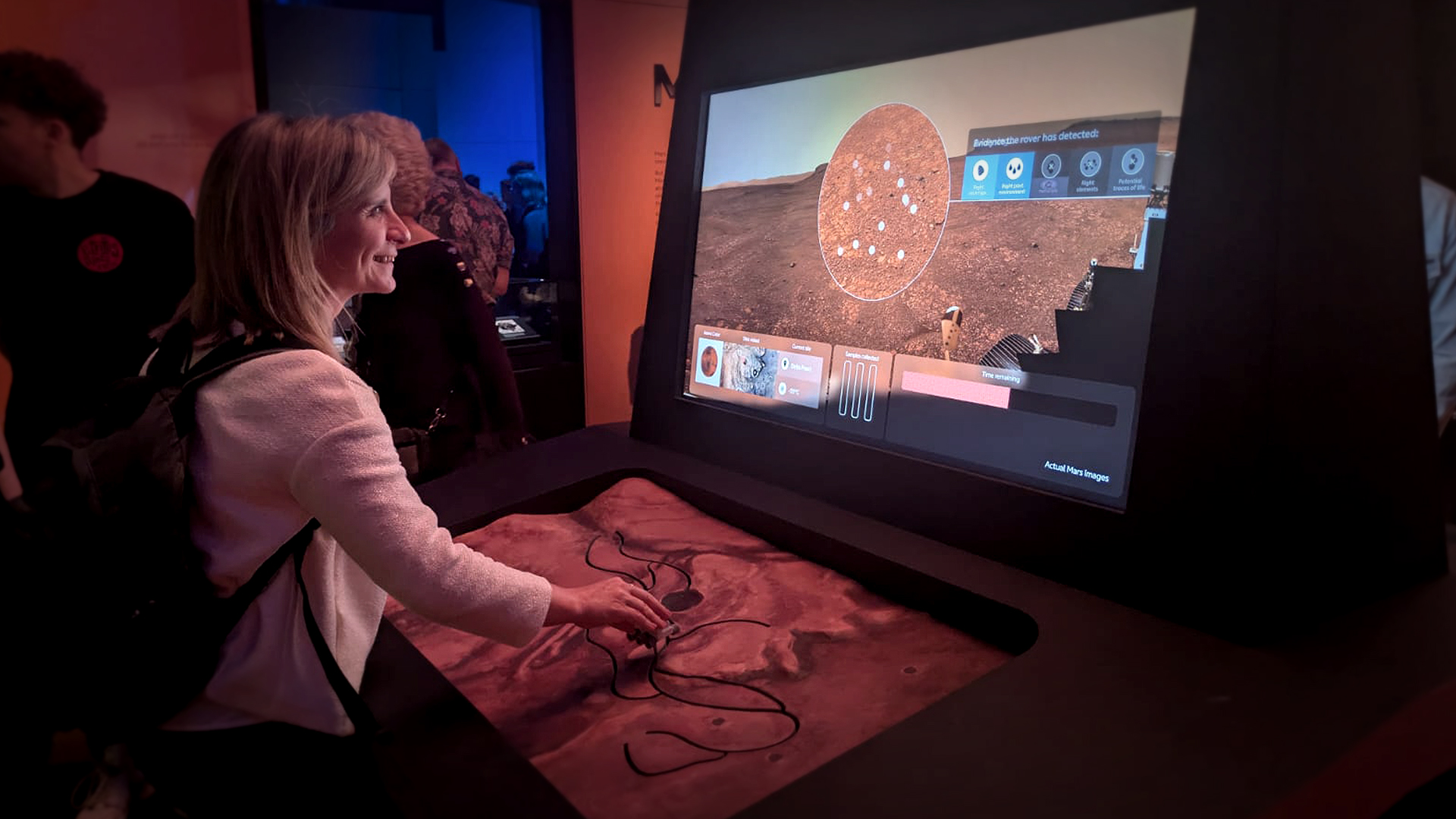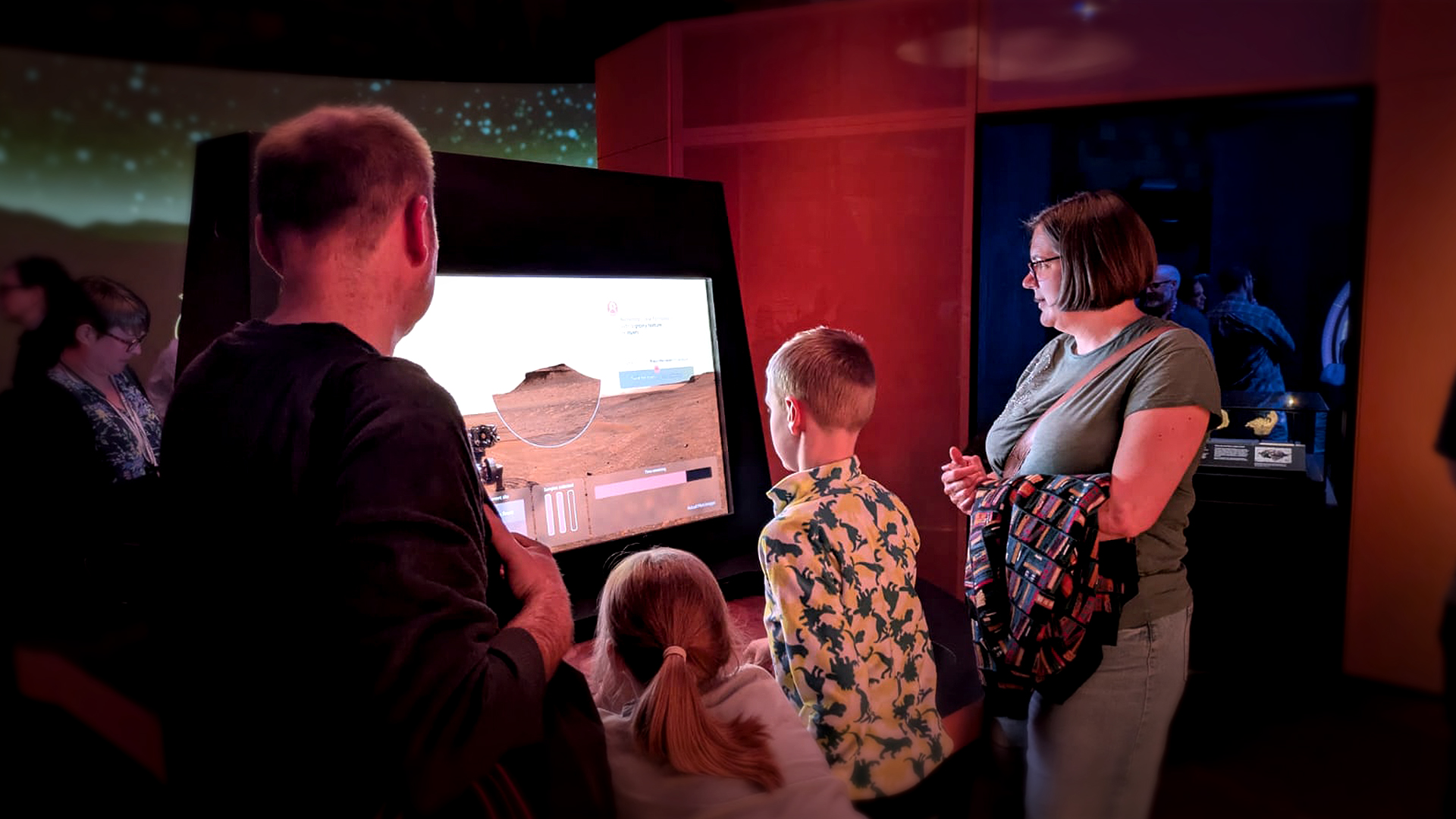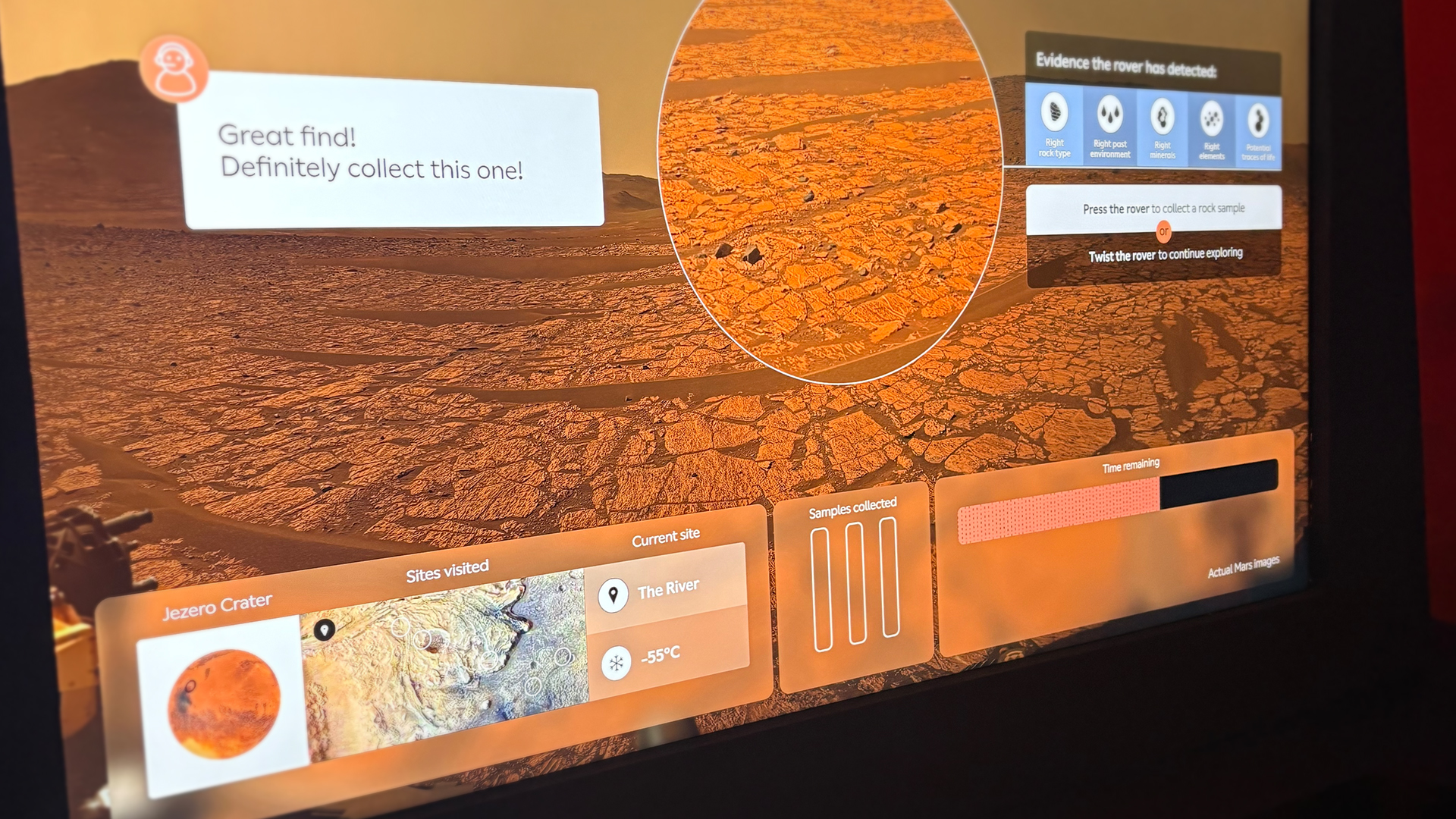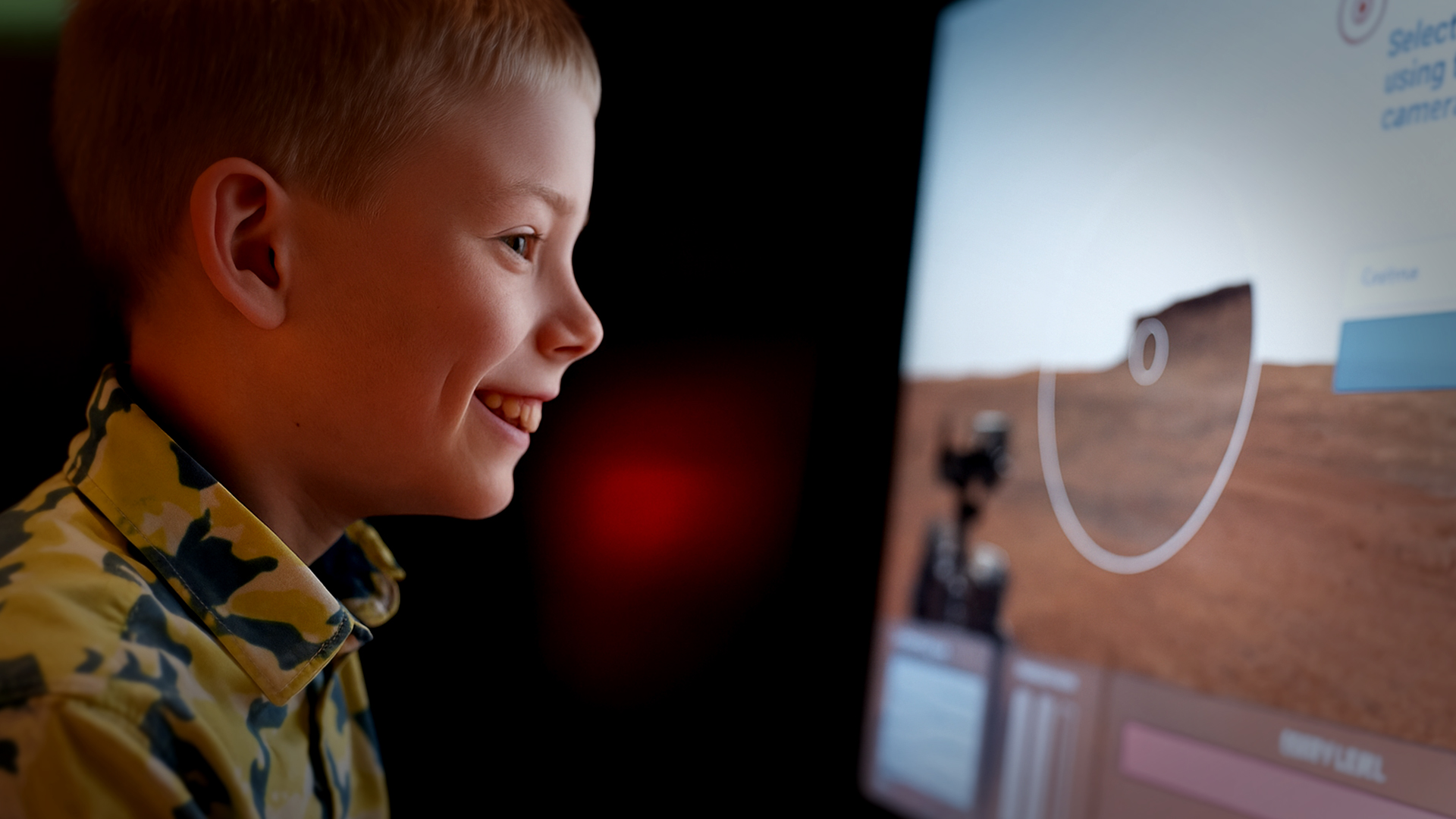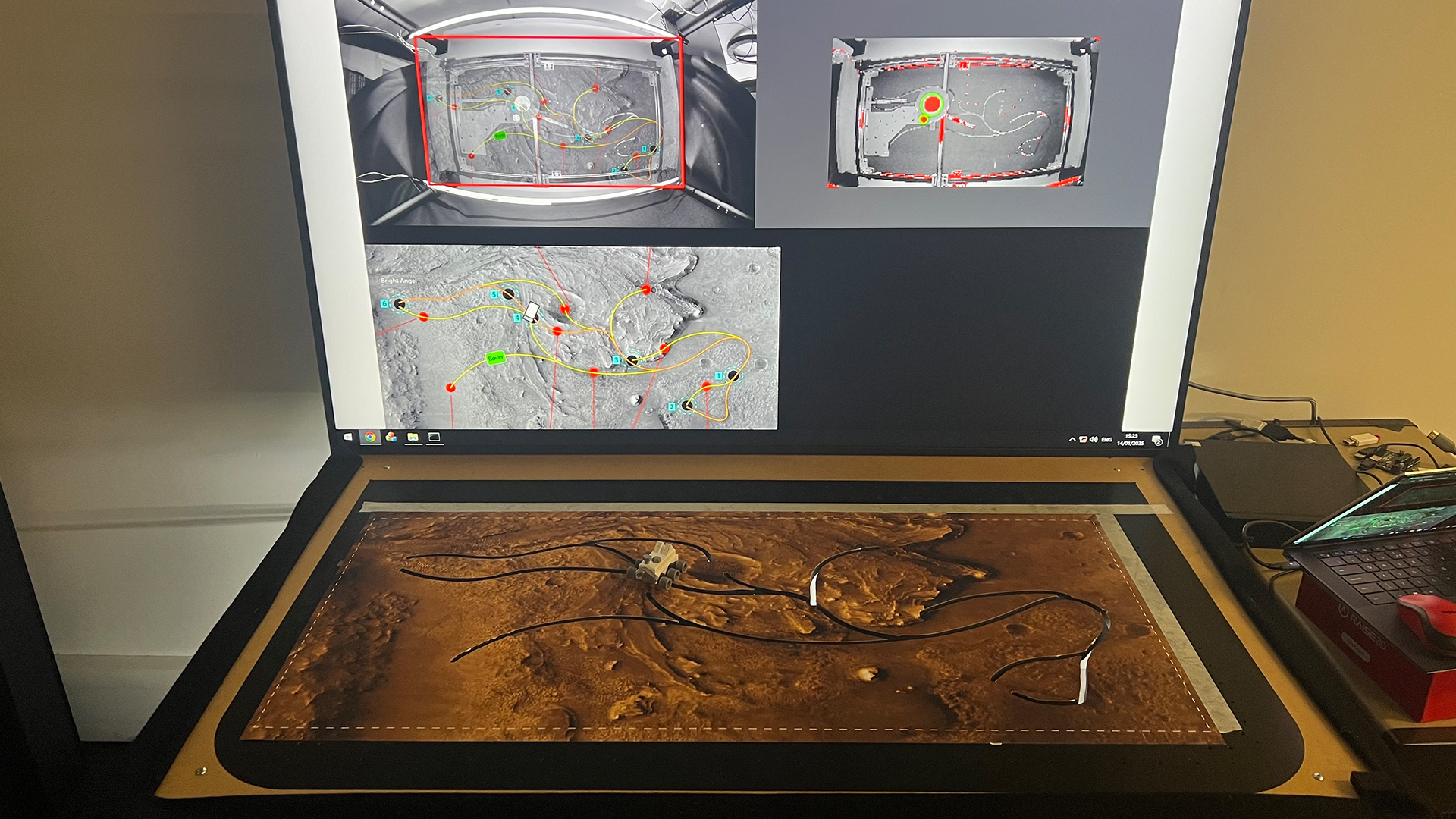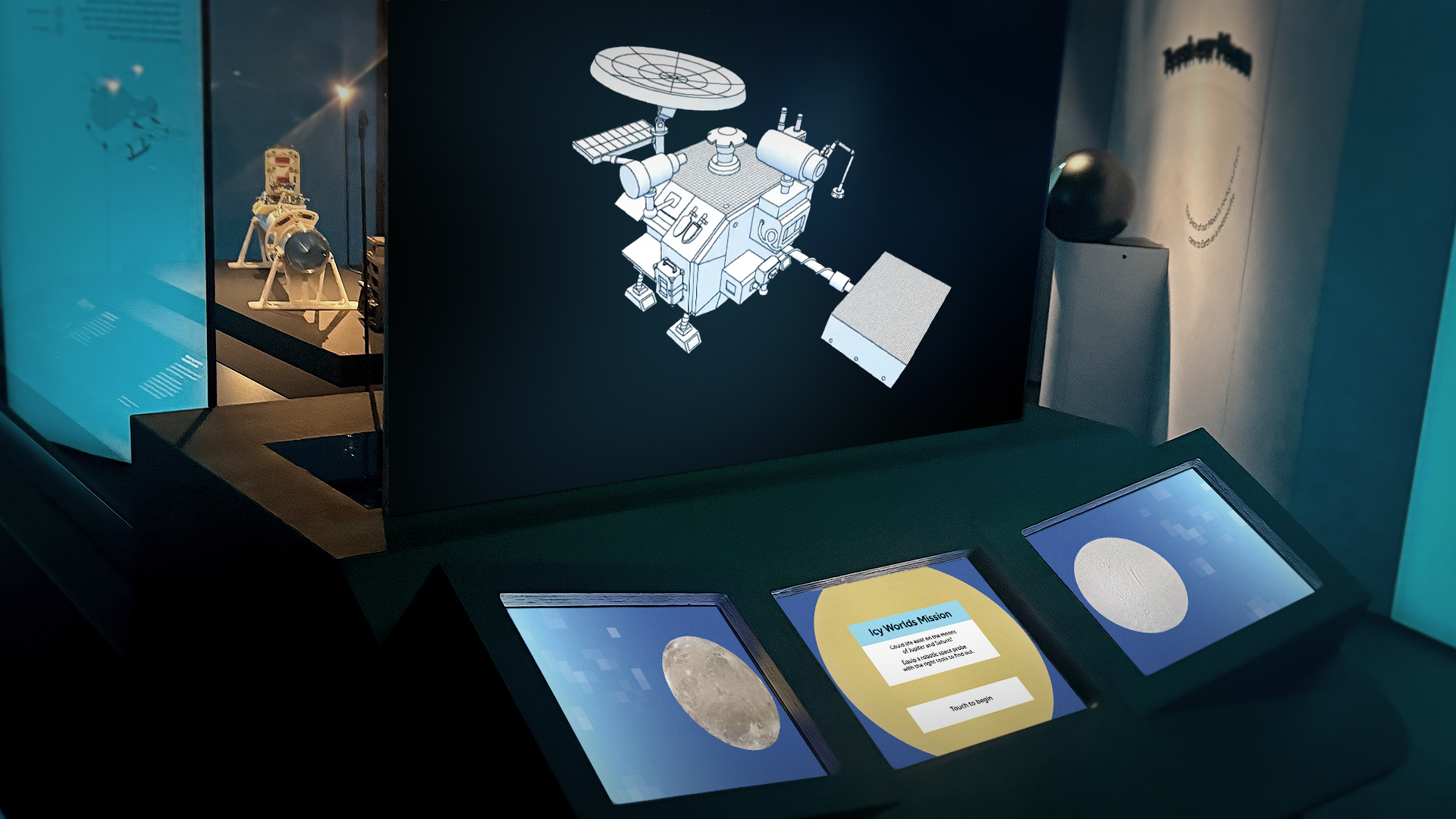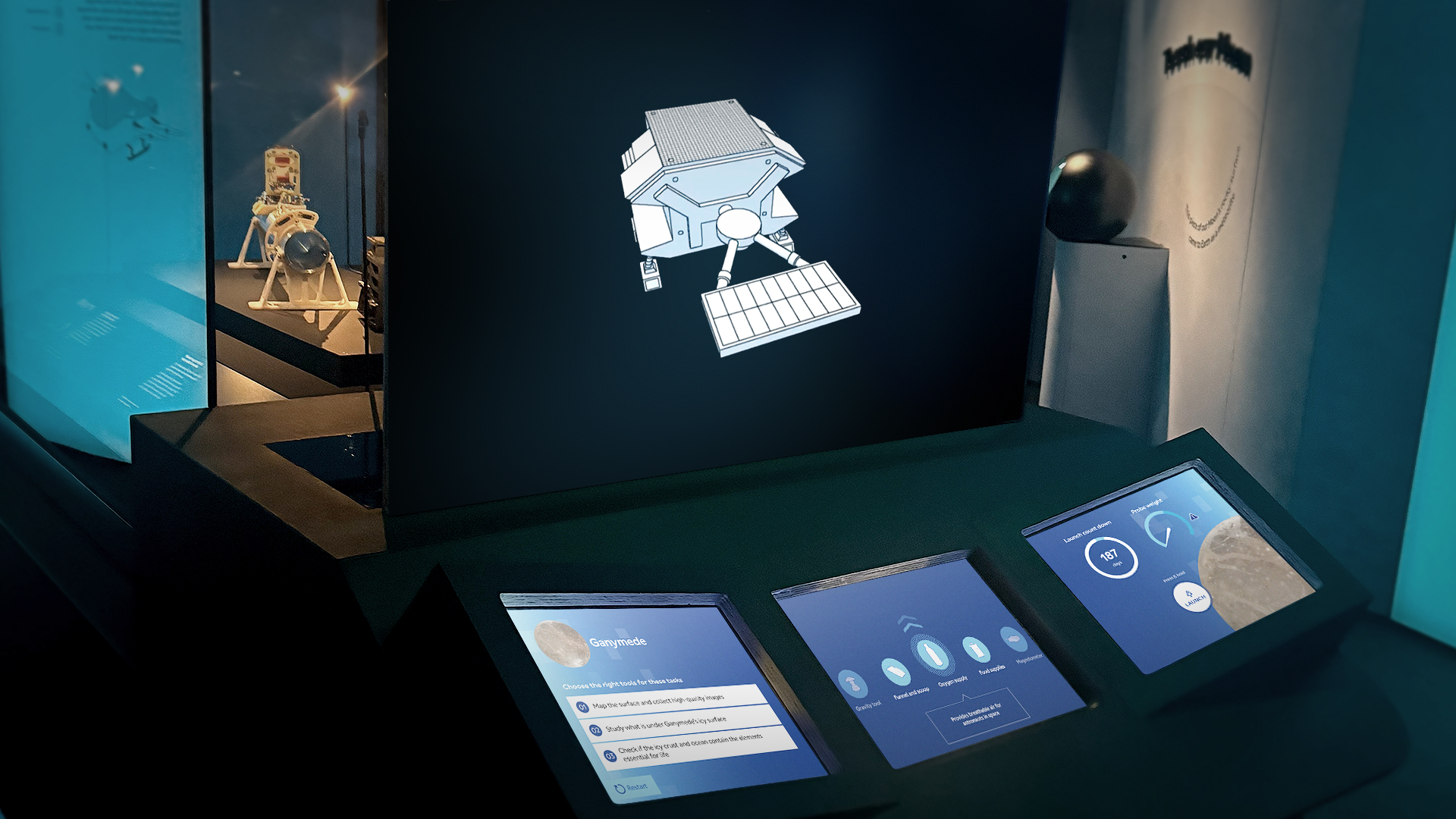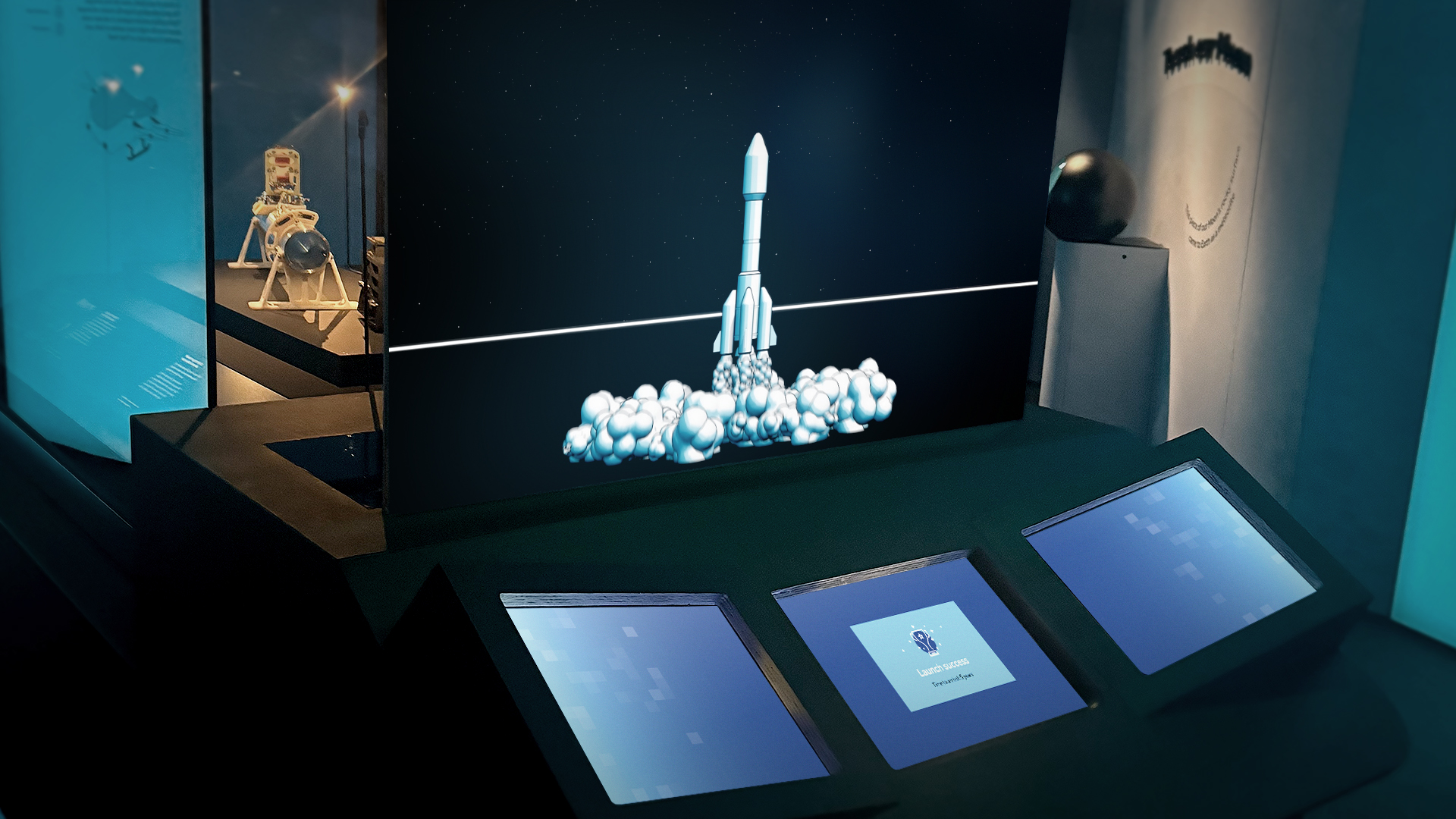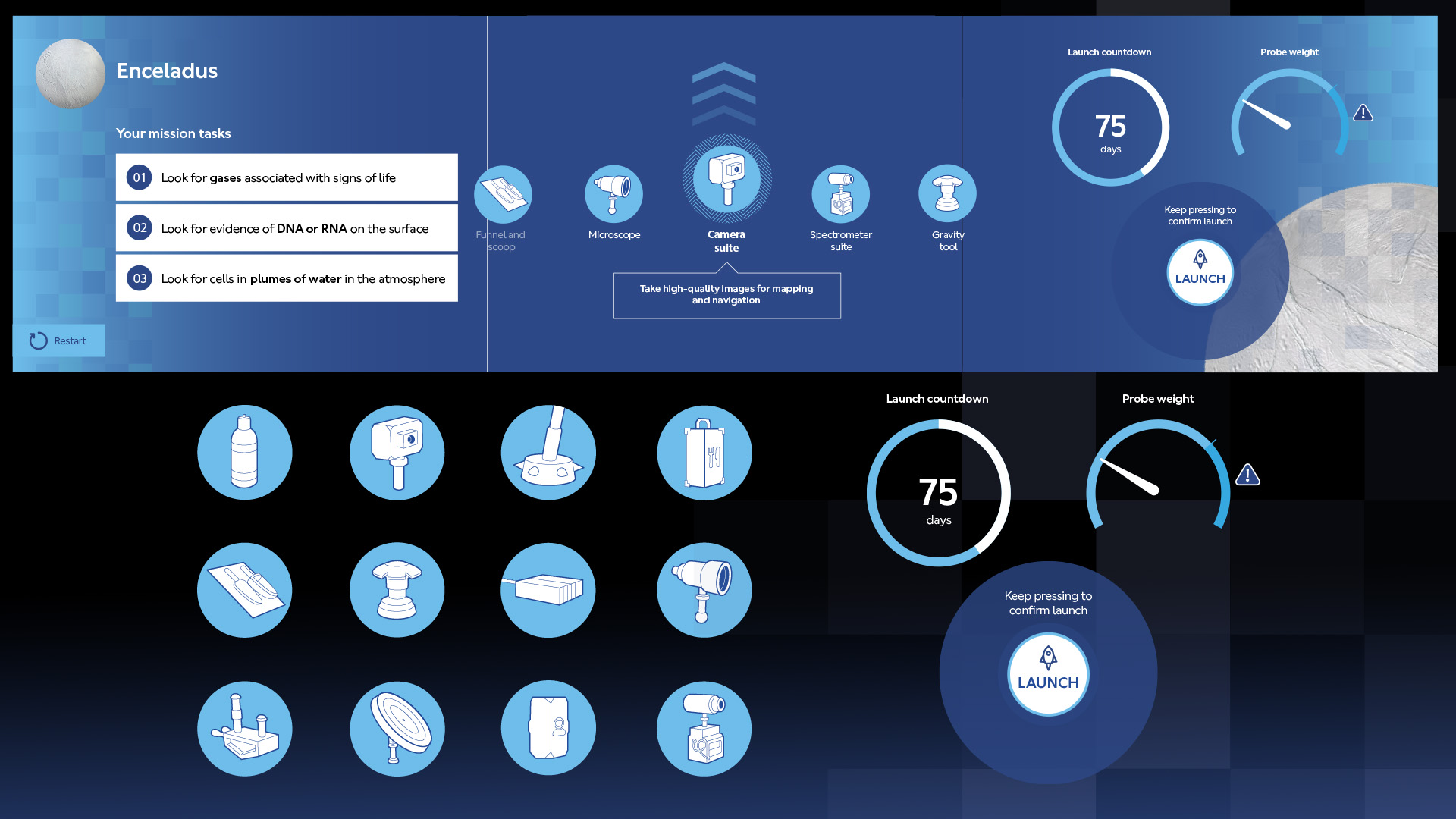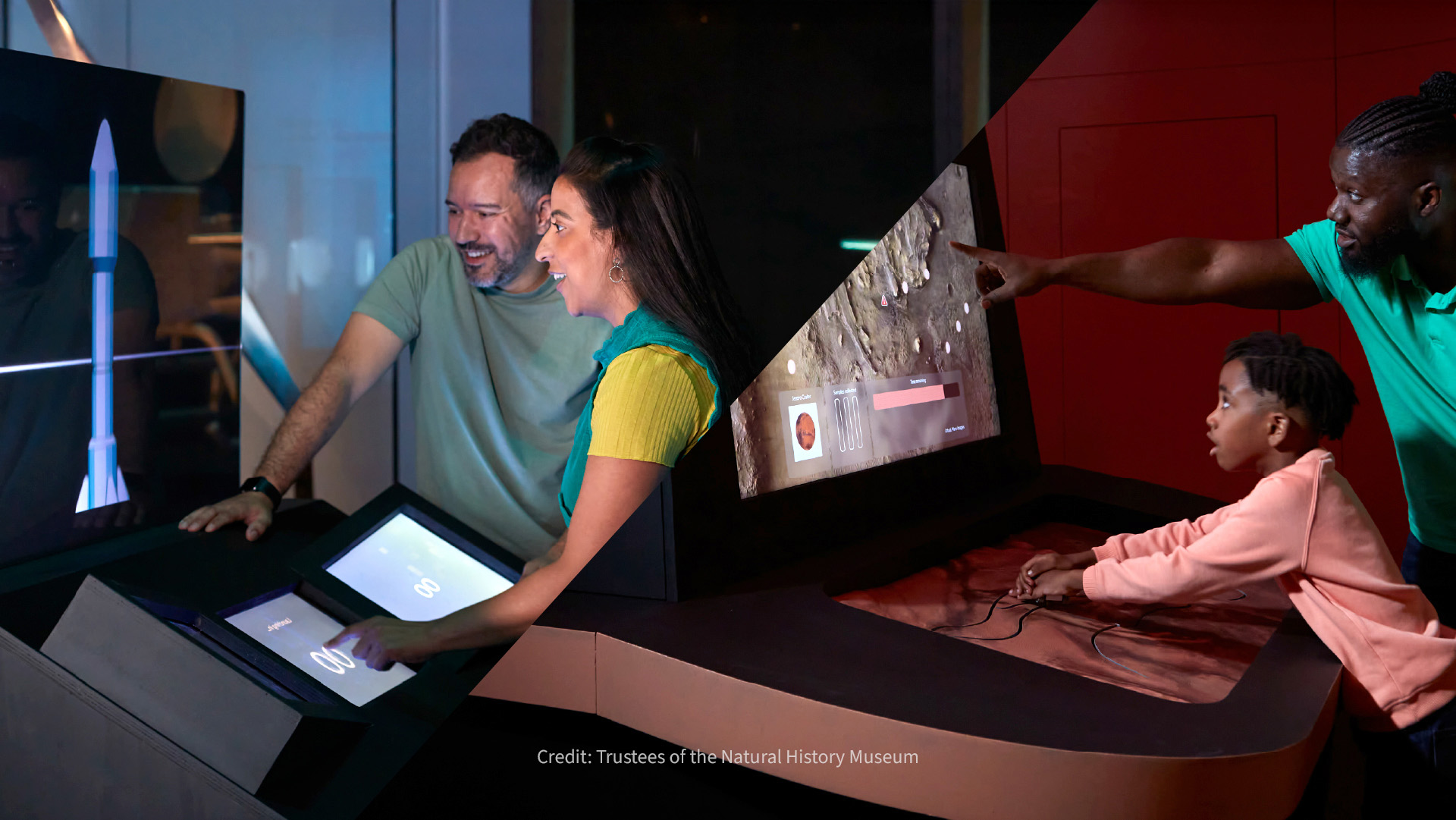
Space: Could Life Exist Beyond Earth? - 2 Interactive Experiences
Exploring new worlds through play.
Two interactive installations designed for exploration — one set on the surface of Mars, the other among the icy moons of Jupiter. Together, they invite visitors to explore and experiment through play.
Brief
The Museum commissioned two interactive experiences that transform the science of space exploration into accessible, engaging, and scientifically grounded games.
For the Mars Rover experience, the aim was to bring the Perseverance mission to life and help visitors understand how scientists search for signs of life on Mars.
For Design a Space Mission, the goal was to create a family-friendly game that turns the complexities of planning a mission to Jupiter’s icy moons into an intuitive, educational challenge.
Our Approach
We collaborated closely with the Museum’s exhibition teams to turn complex planetary science into playful, immersive experiences.
For Mars Rover, we developed a hybrid physical–digital installation: a large-scale model of the Martian surface paired with an interactive interface that allowed visitors to pilot a rover and investigate geological features.
For Design a Space Mission, we explored how to make mission planning engaging and accessible. Drawing on real missions such as ESA’s JUICE spacecraft, we introduced authentic constraints around payload, energy, and scientific priorities — balancing strategy, simulation, and role-play to give the game both educational depth and broad appeal.
Our team led the design and development of both interactives from concept to installation, including UX design, game logic, software development, hardware setup, and on-site calibration. Working alongside the Museum’s model-making and technical teams, we ensured the installations were robust for high visitor volumes, scientifically accurate, and seamlessly integrated within the wider exhibition.
We set out to turn the science of planetary exploration into experiences people could touch, play, and understand — where complex ideas become moments of discovery.
Our Solution
In the Mars Rover Game, two interactive stations were positioned within the exhibition’s Mars zone. Visitors stepped into the role of mission scientists, piloting a digital rover across a model Martian landscape, navigating hazards, and selecting drill sites to collect samples. Real-time visual and audio feedback guided each decision, illustrating how scientists interpret geological data and search for signs of life remotely. The experience encouraged exploration, strategy, and discovery — inviting visitors to think like the Perseverance mission team.
In Design a Space Mission, visitors designed and launched their own spacecraft using three touchscreen panels and a large projection display. Players selected instruments, balanced payload weight, and customised their probe in real time before launching toward the icy moons of Jupiter. Successful designs achieved smooth launches, while overloaded ones produced dramatic failure animations — each outcome offering a unique journey past worlds such as Europa, Ganymede, and Callisto.
Extensive testing with stakeholders ensured both installations were inclusive and enjoyable for families, schools, and adults alike. Each combines real science with hands-on play — sparking curiosity, encouraging experimentation, and turning the challenges of space exploration into memorable, interactive learning experiences.
The result is a pair of installations that transform real space missions into interactive journeys — inviting every visitor to explore like a scientist.

